Abstract
Although the verbal operants that comprise Skinner's account of verbal behavior provide a seemingly complete description of the behavior of the speaker with respect to what is ordinarily called the expression of meanings, it may be shown that the account is intrinsically deficient in describing the receptive behavior of listeners with regard to their comprehension of the meanings of novel words, sentences and propositions. In response to this perceived deficiency, the notion of joint control is presented here. Joint control occurs when a verbal-operant topography, currently evoked by one stimulus, is additionally (i.e., jointly) evoked by a second stimulus. This event of joint stimulus control then sets the occasion for a response. This simple mechanism is shown here to have exceedingly broad explanatory properties: providing a coherent and rigorously behavioral account of various aspects of language ranging from meaning, reference and comprehension, to the development of abstraction in children's speech.
Full text
PDF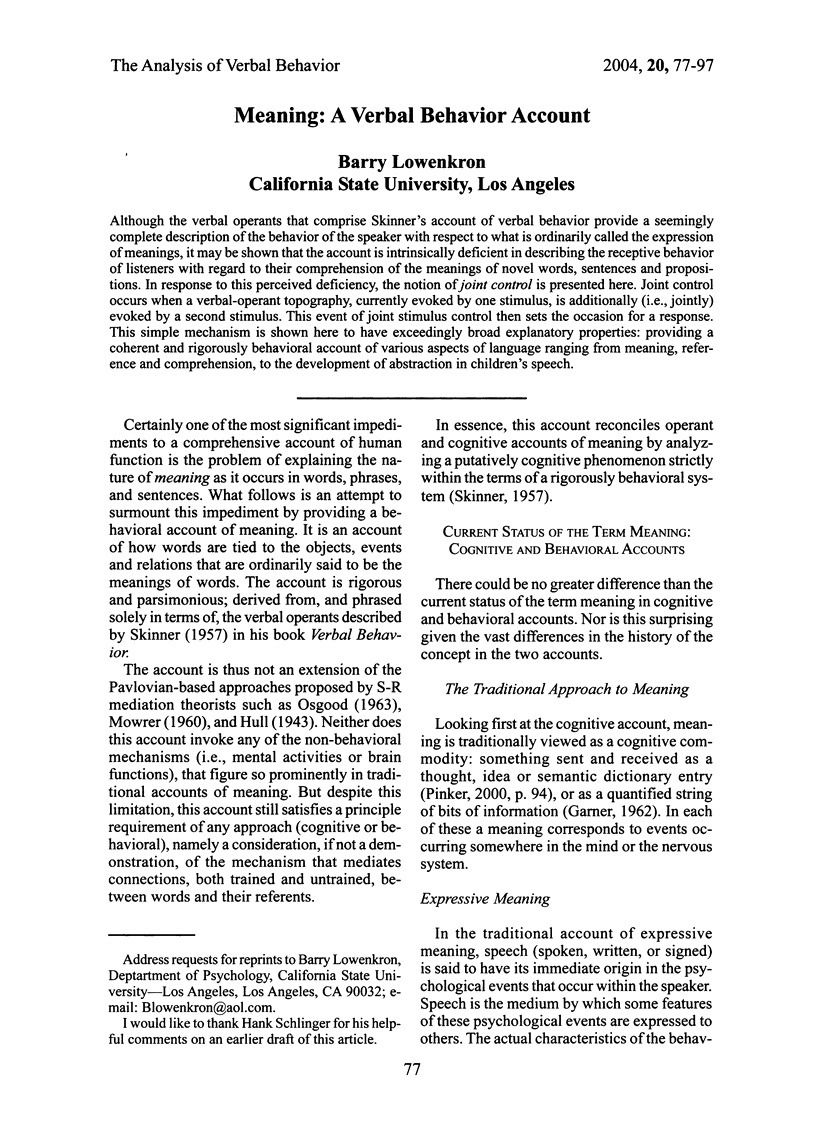
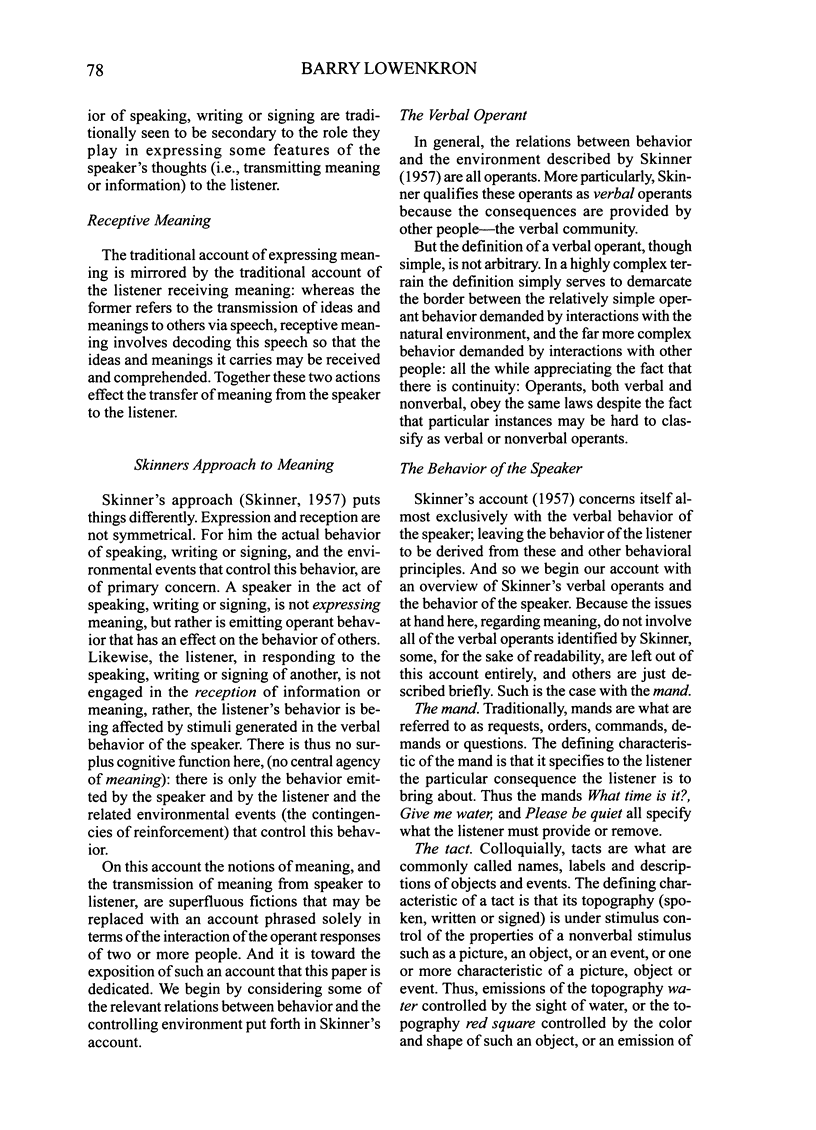
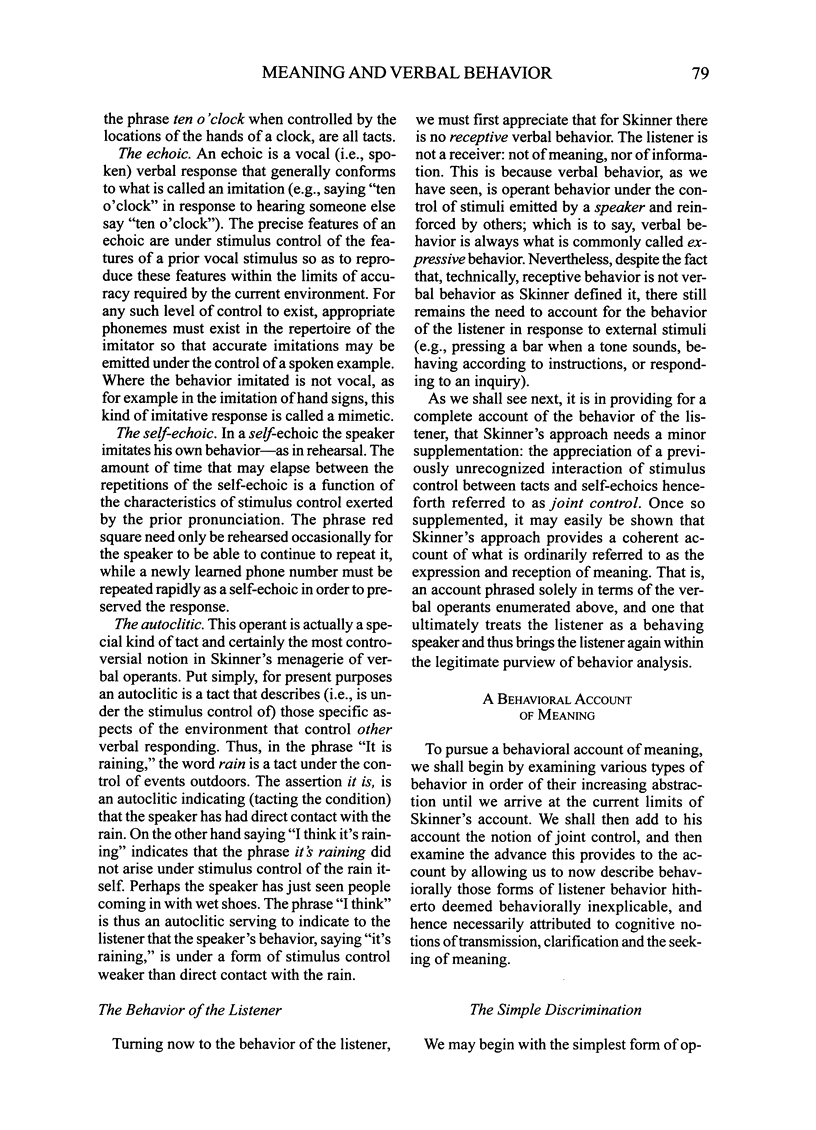
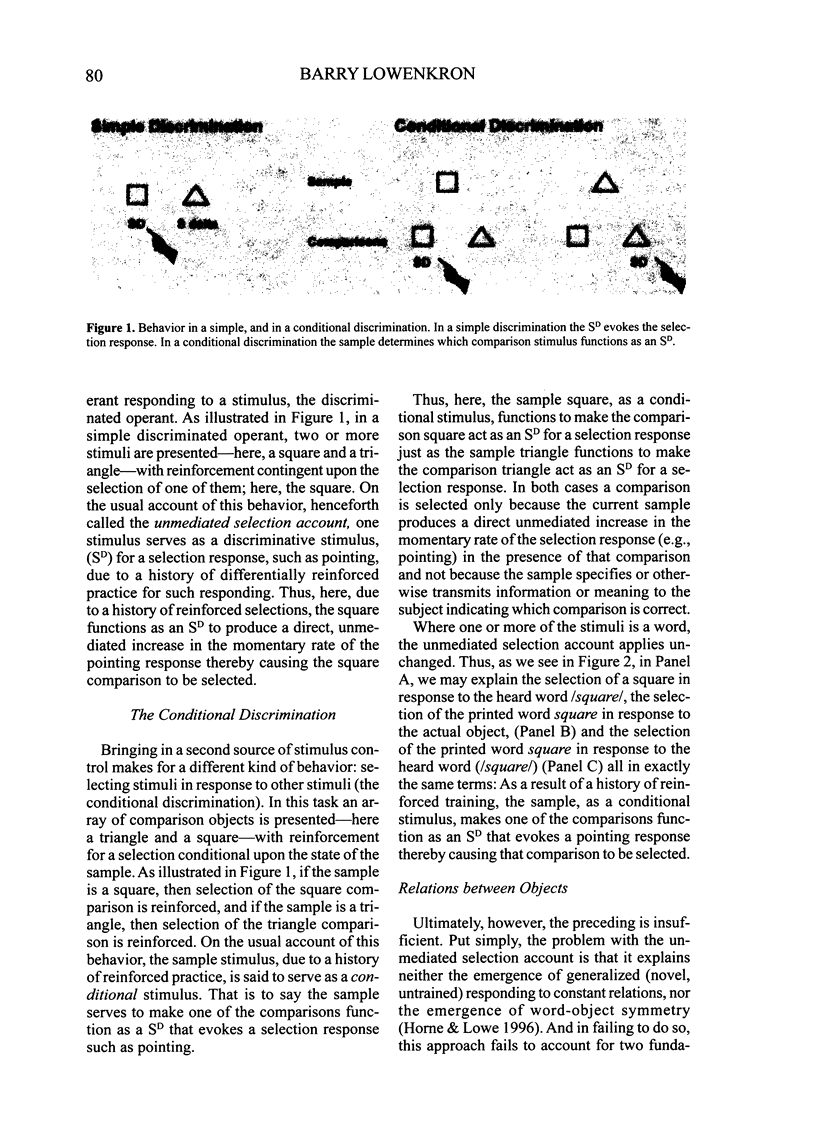
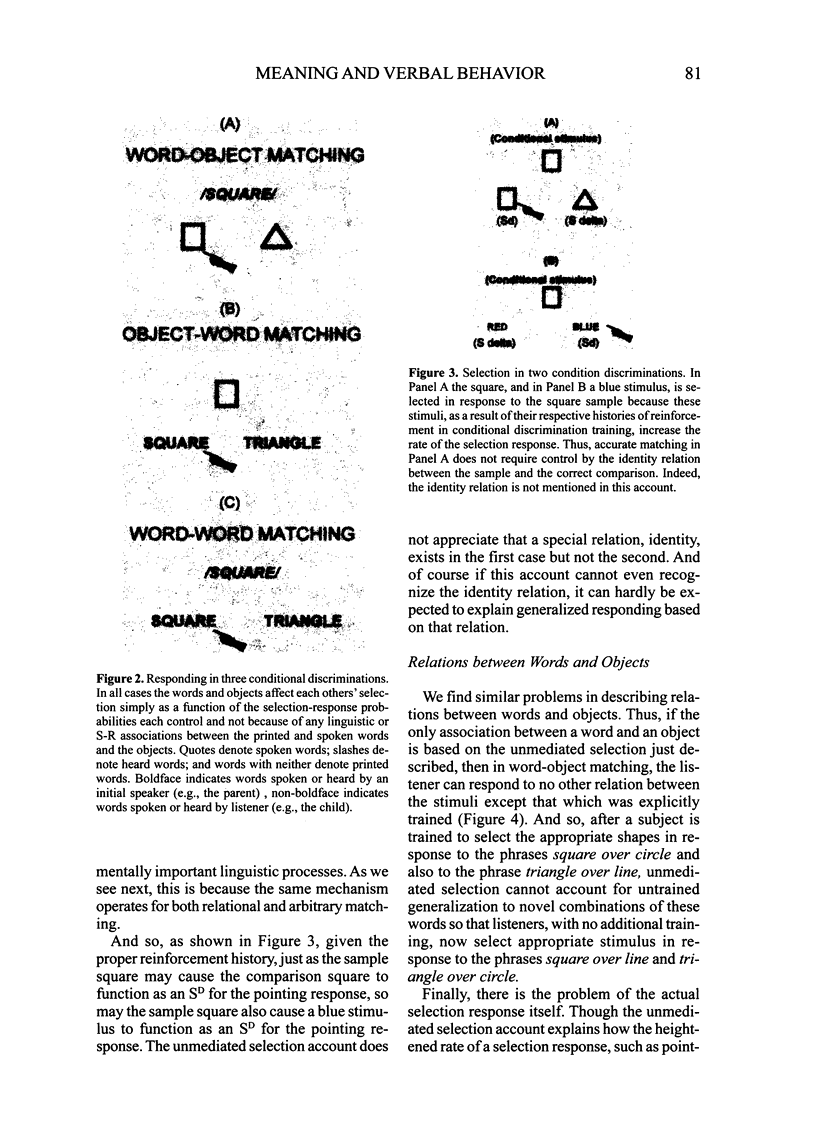
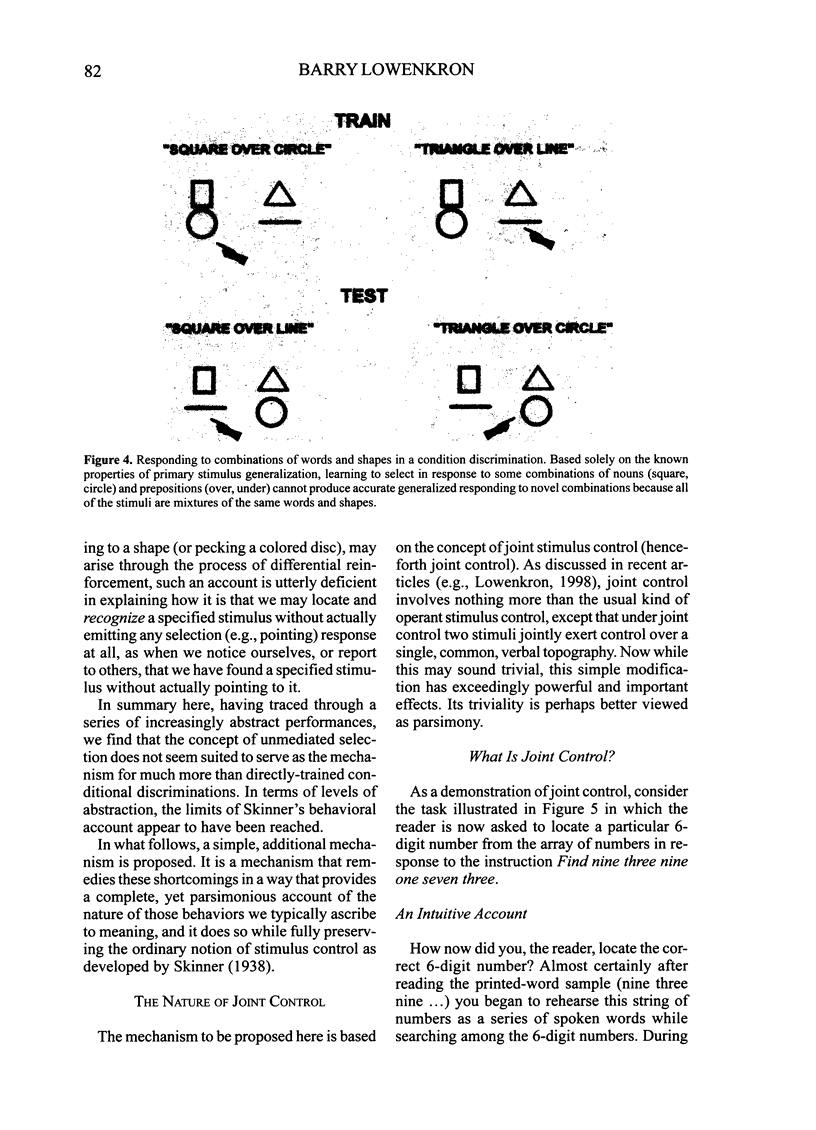
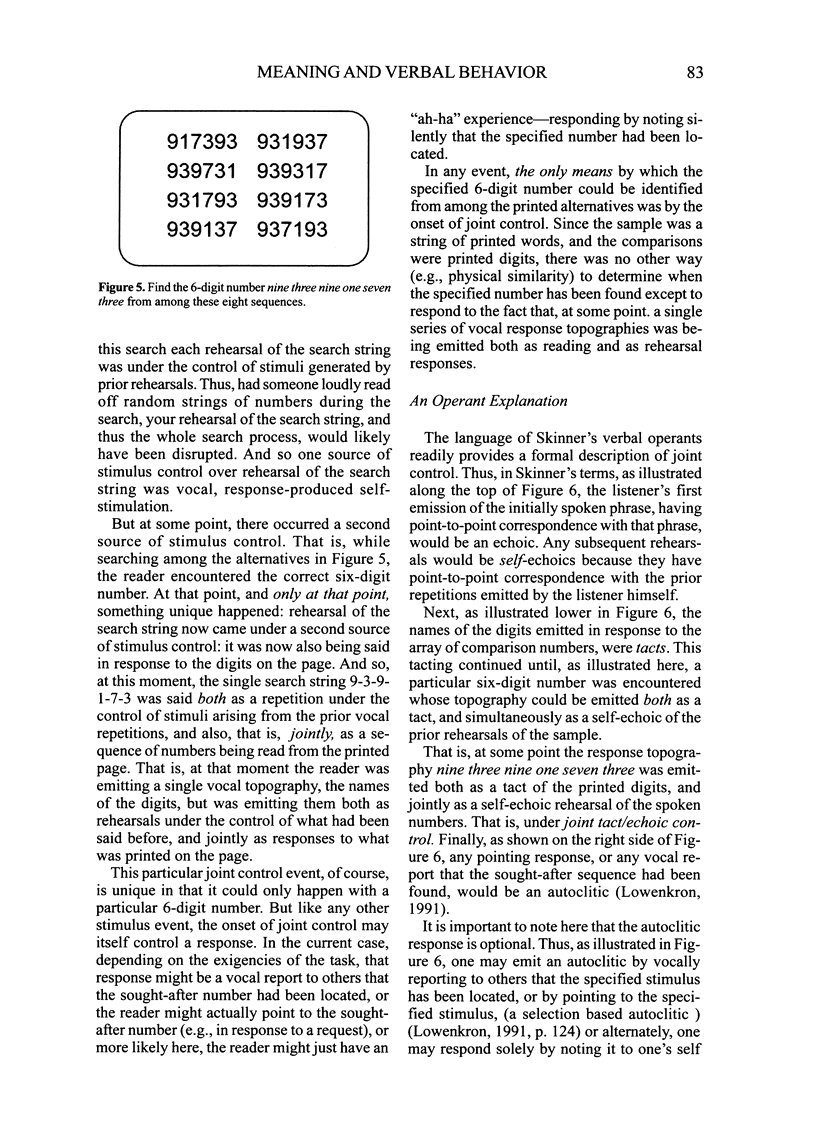
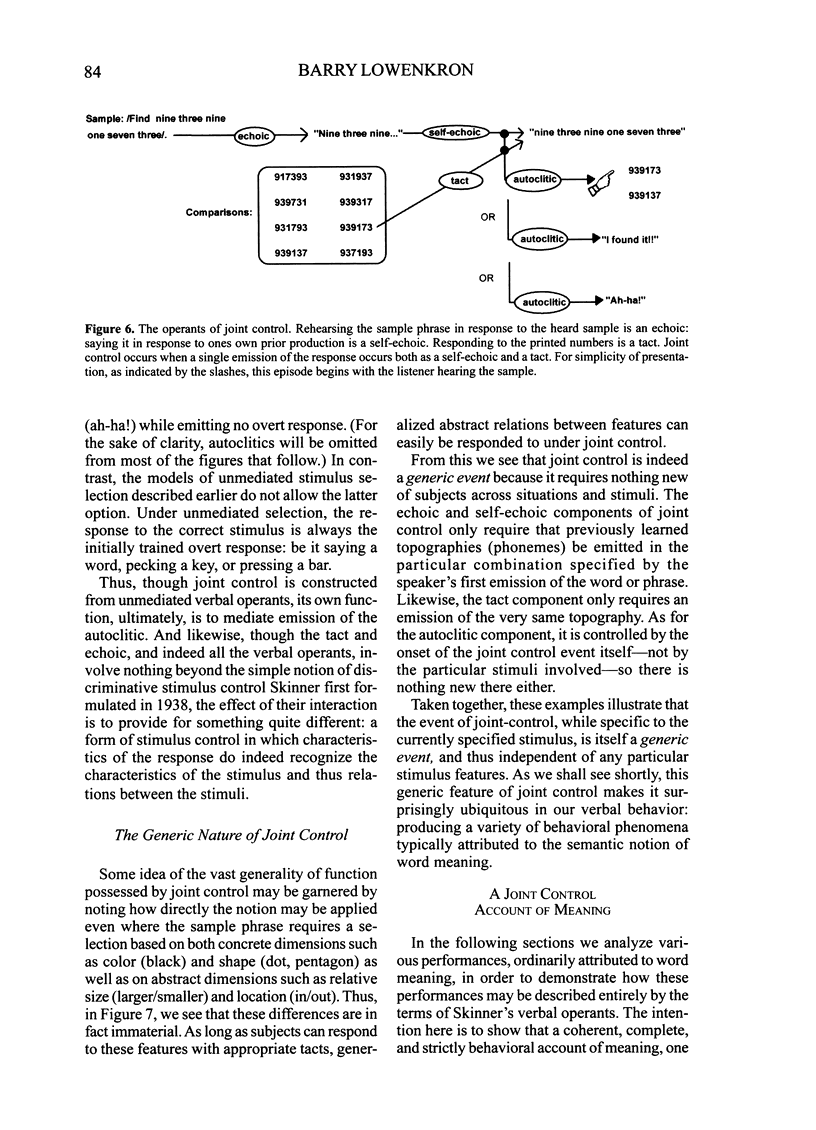
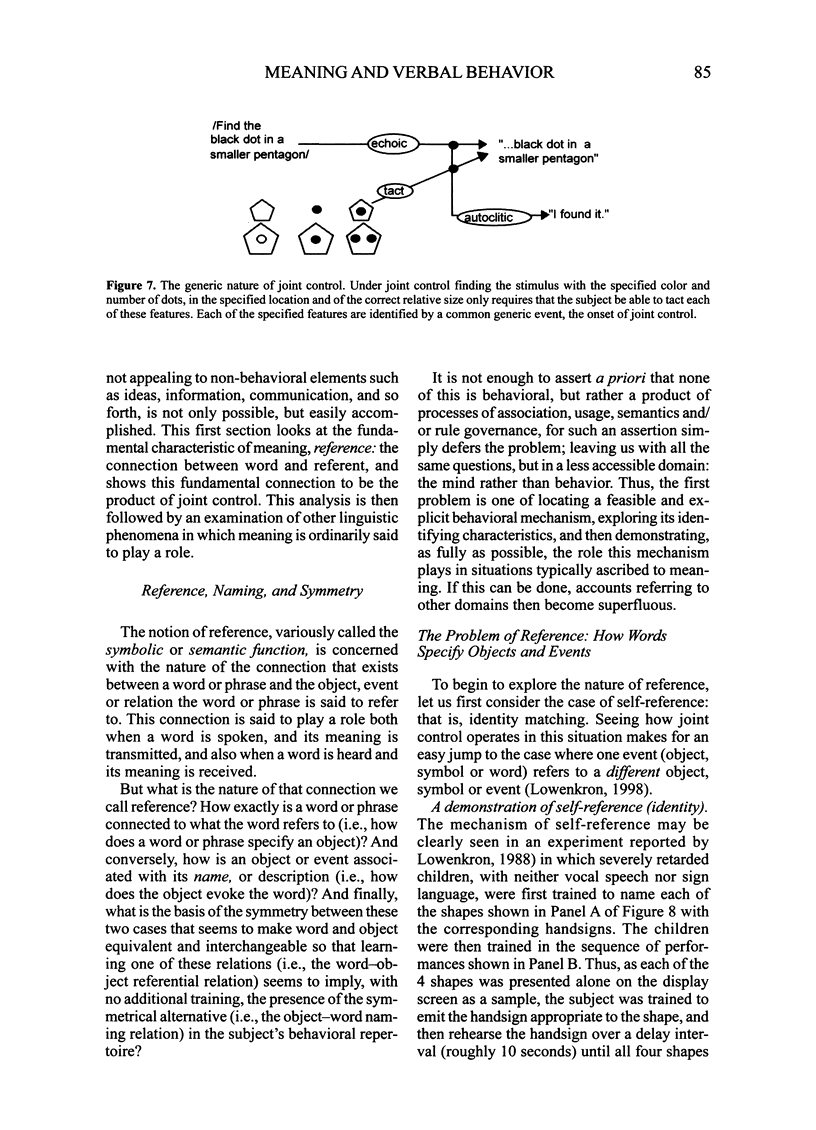
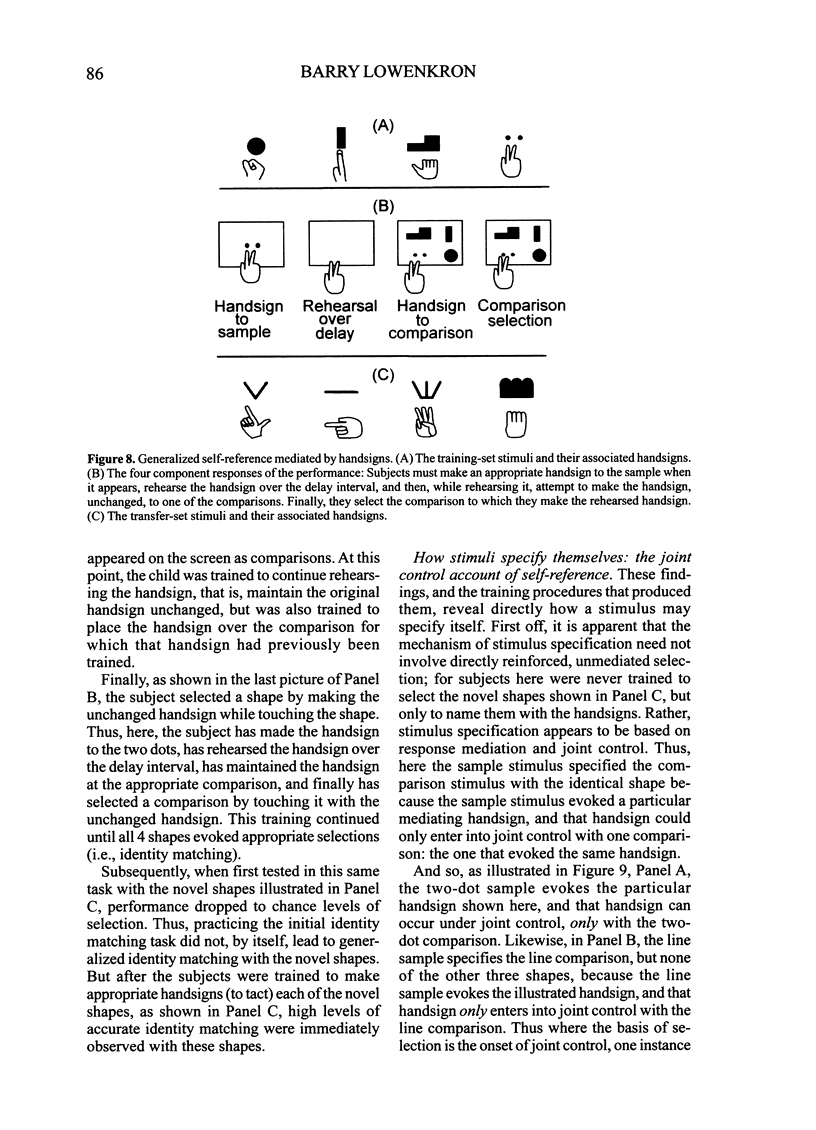
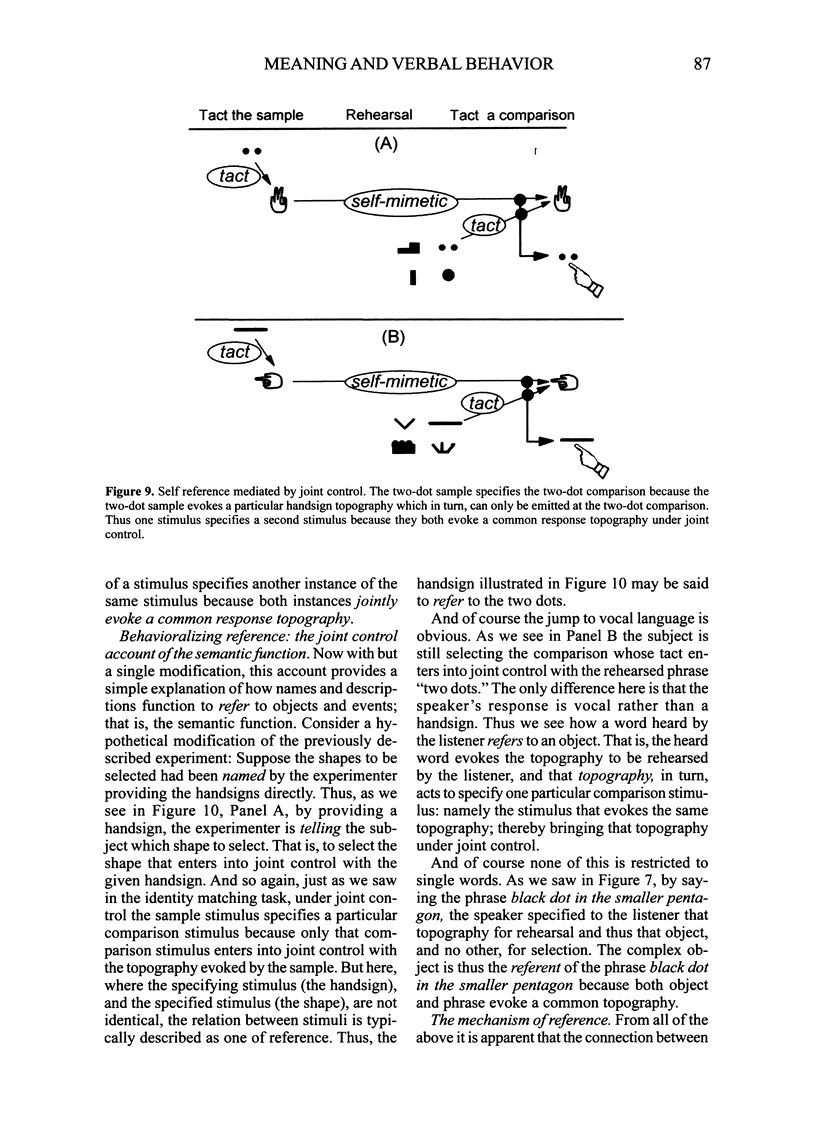
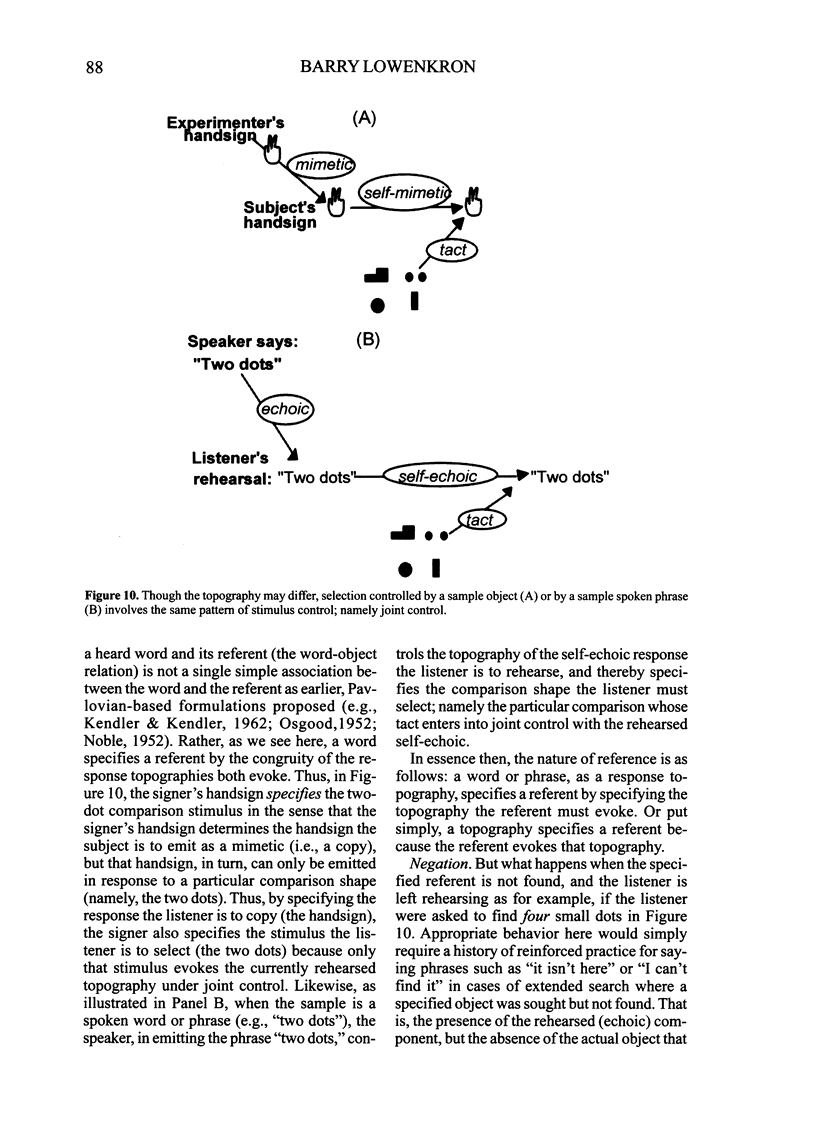
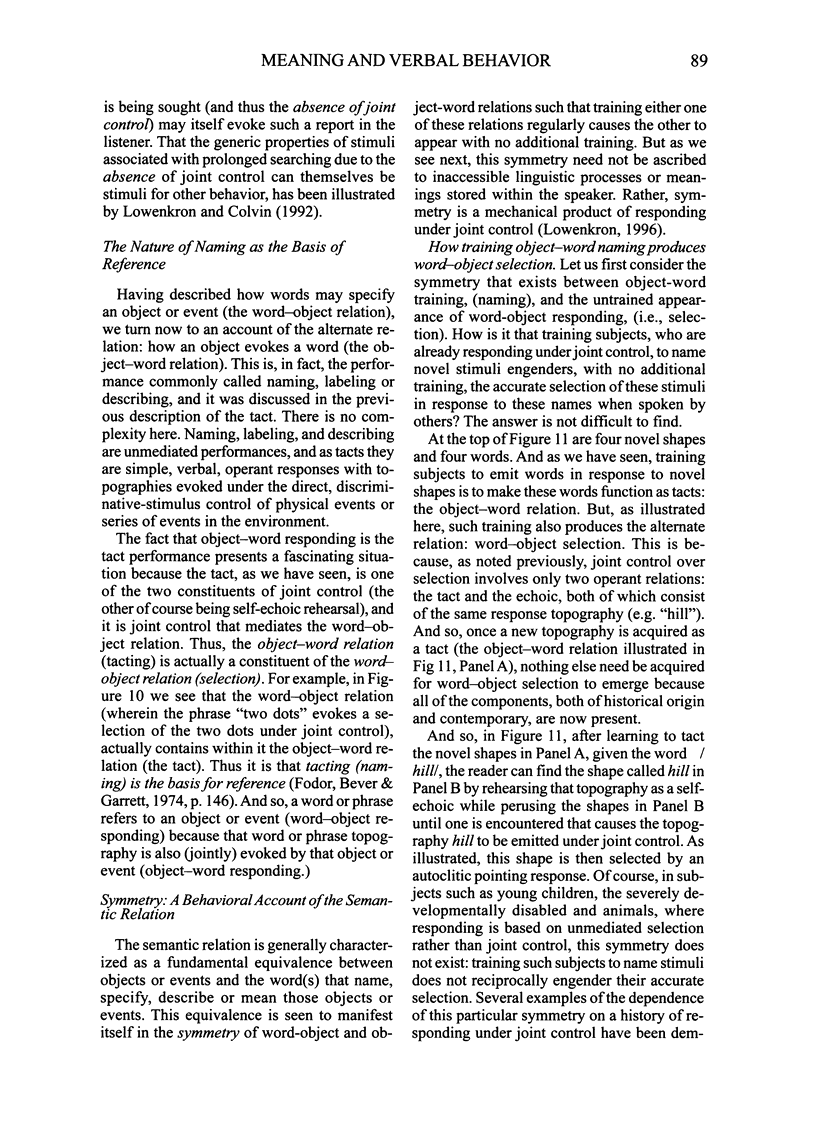
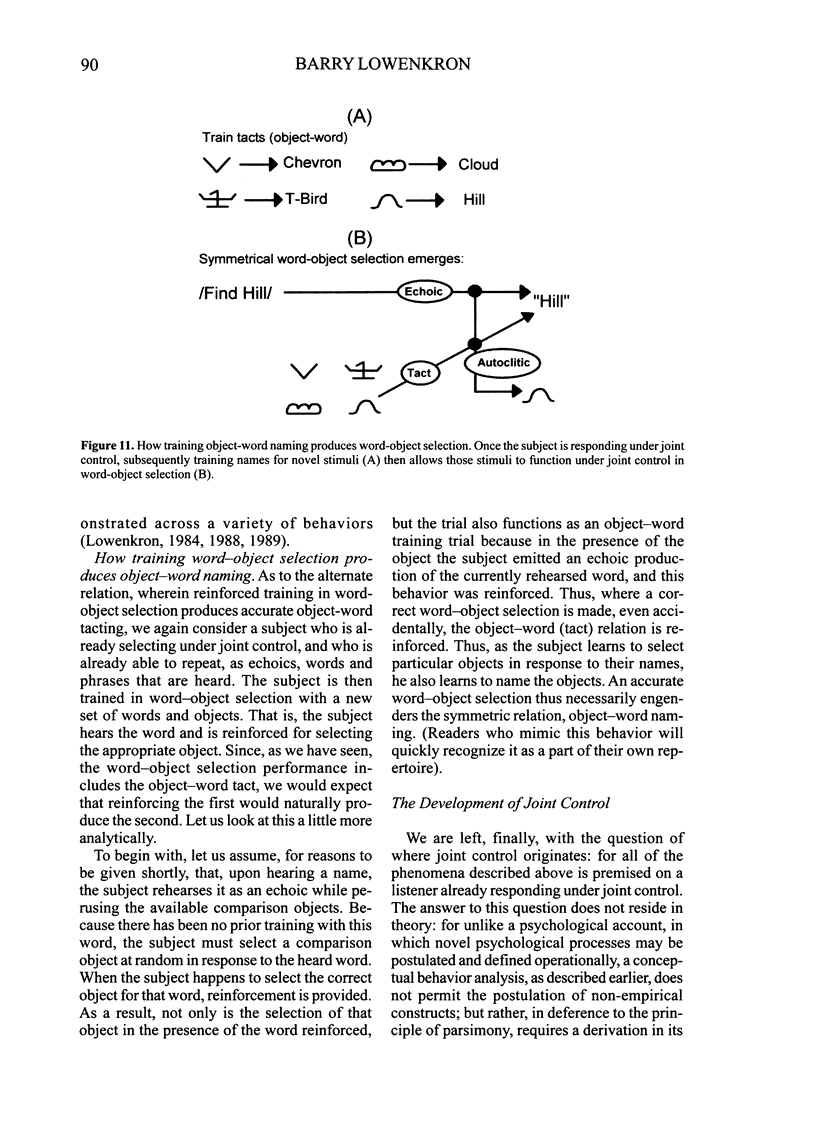
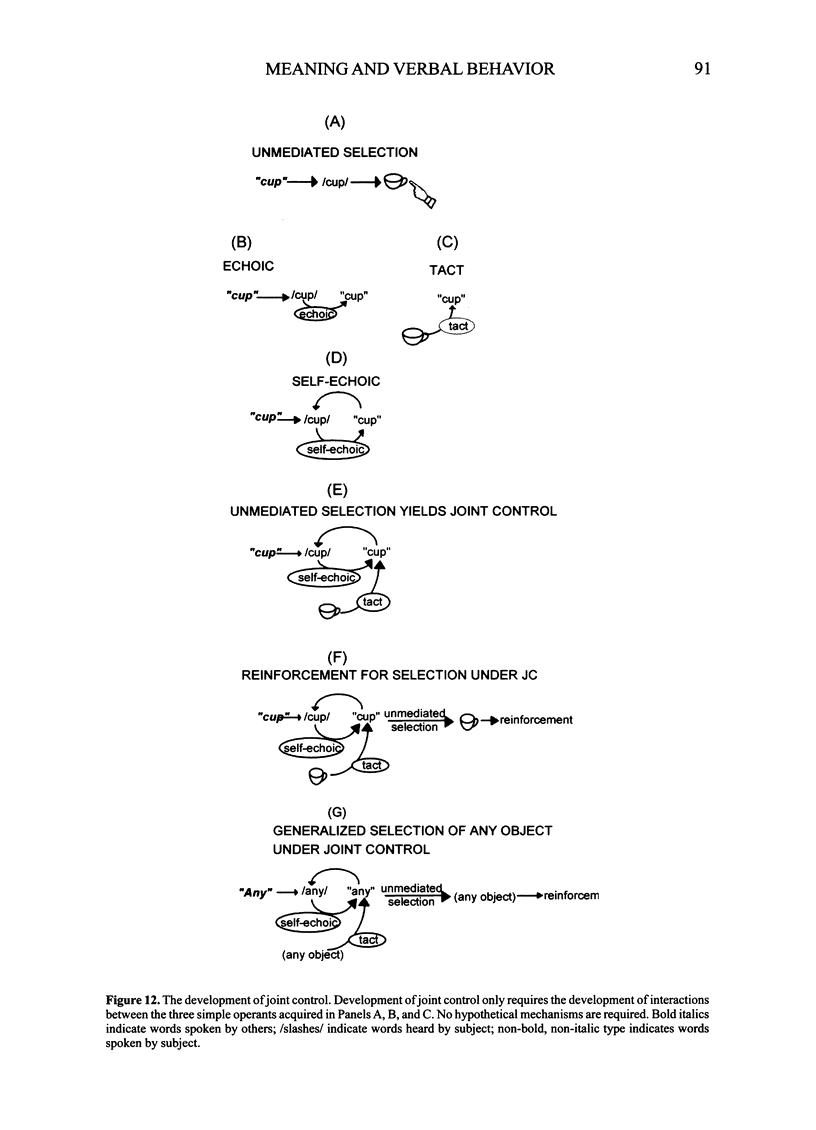
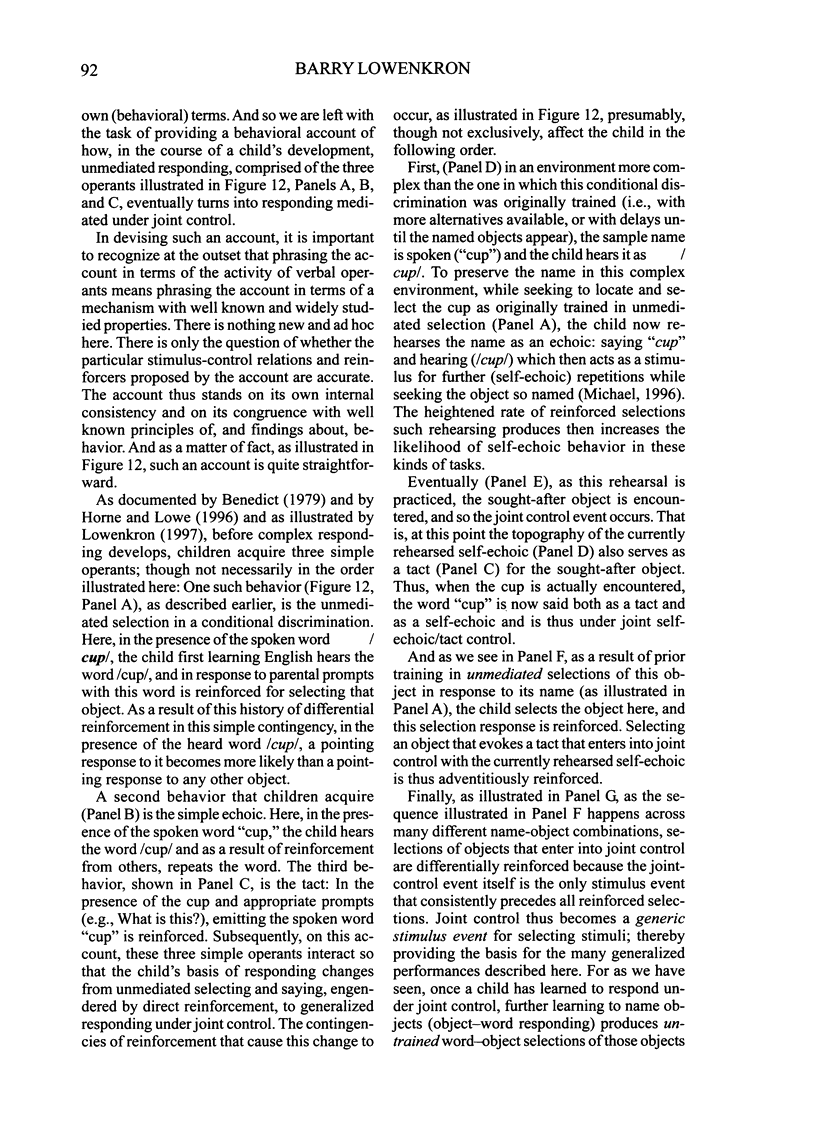
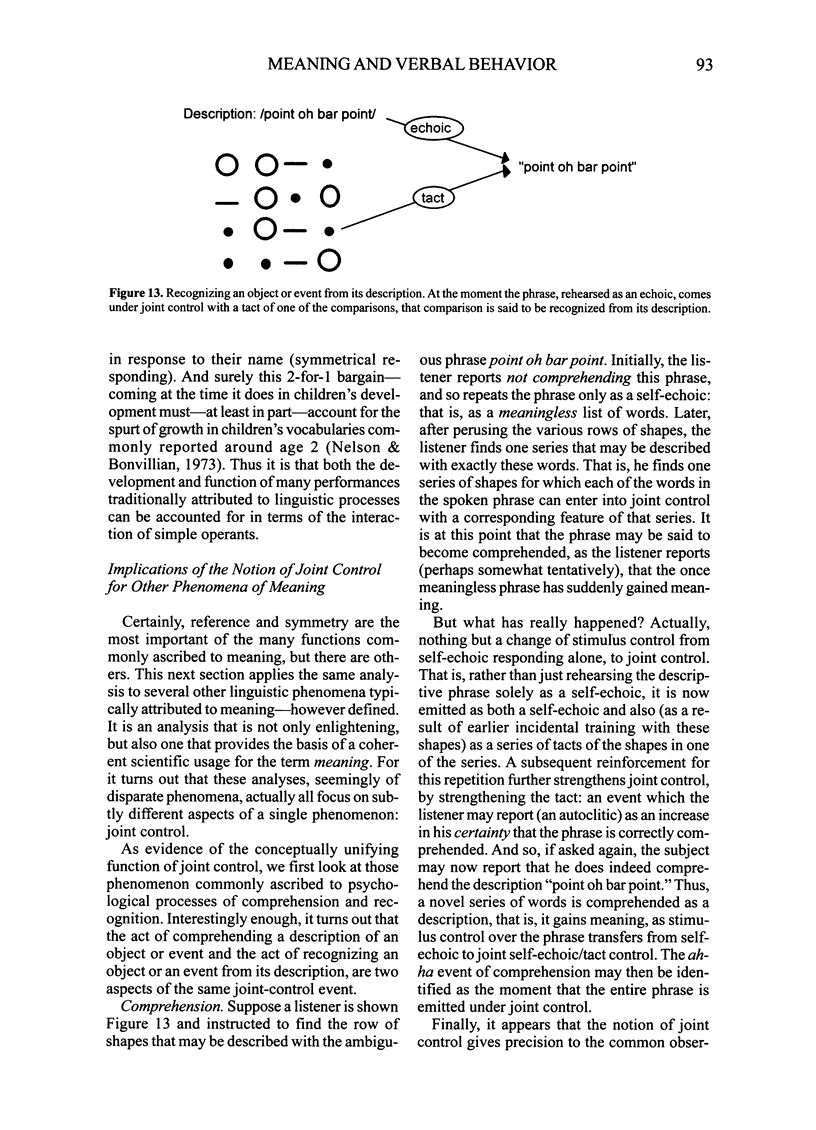
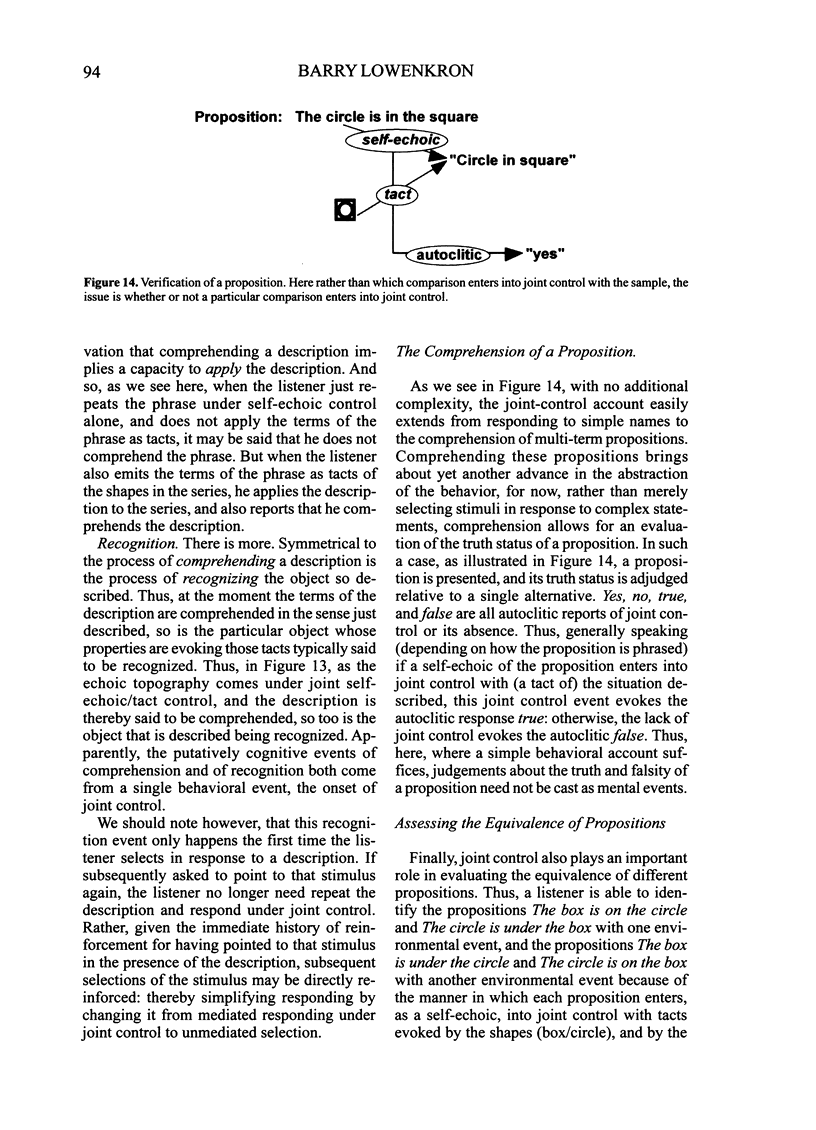
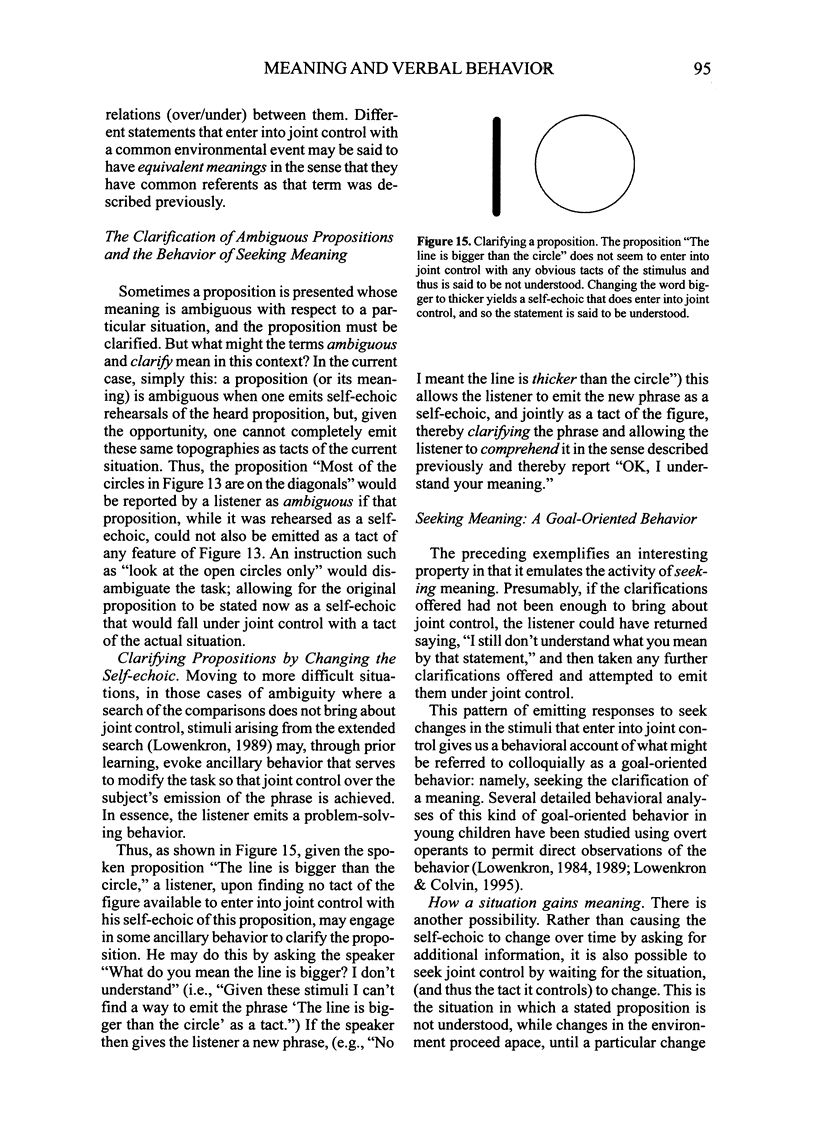
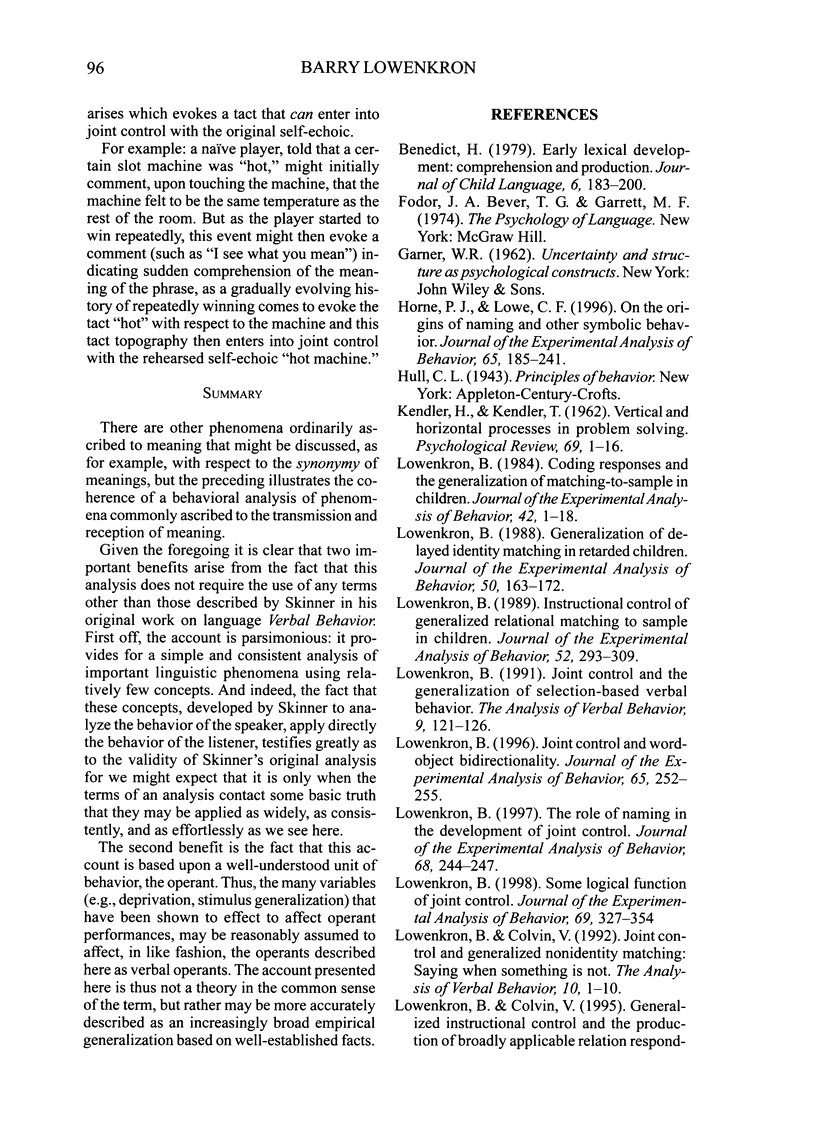

Selected References
These references are in PubMed. This may not be the complete list of references from this article.
- Benedict H. Early lexical development: comprehension and production. J Child Lang. 1979 Jun;6(2):183–200. doi: 10.1017/s0305000900002245. [DOI] [PubMed] [Google Scholar]
- Horne P. J., Lowe C. F. On the origins of naming and other symbolic behavior. J Exp Anal Behav. 1996 Jan;65(1):185–241. doi: 10.1901/jeab.1996.65-185. [DOI] [PMC free article] [PubMed] [Google Scholar]
- KENDLER H. H., KENDLER T. S. Vertical and horizontal processes in problem solving. Psychol Rev. 1962 Jan;69:1–16. doi: 10.1037/h0038537. [DOI] [PubMed] [Google Scholar]
- Lowenkron B. Coding responses and the generalization of matching to sample in children. J Exp Anal Behav. 1984 Jul;42(1):1–18. doi: 10.1901/jeab.1984.42-1. [DOI] [PMC free article] [PubMed] [Google Scholar]
- Lowenkron B. Generalization of delayed identity matching in retarded children. J Exp Anal Behav. 1988 Sep;50(2):163–172. doi: 10.1901/jeab.1988.50-163. [DOI] [PMC free article] [PubMed] [Google Scholar]
- Lowenkron B. Instructional control of generalized relational matching to sample in children. J Exp Anal Behav. 1989 Nov;52(3):293–309. doi: 10.1901/jeab.1989.52-293. [DOI] [PMC free article] [PubMed] [Google Scholar]
- Lowenkron B. Joint control and word-object bidirectionality. J Exp Anal Behav. 1996 Jan;65(1):252–255. doi: 10.1901/jeab.1996.65-252. [DOI] [PMC free article] [PubMed] [Google Scholar]
- Lowenkron B. Some logical functions of joint control. J Exp Anal Behav. 1998 May;69(3):327–354. doi: 10.1901/jeab.1998.69-327. [DOI] [PMC free article] [PubMed] [Google Scholar]
- Lowenkron B. The role of joint control in the development of naming. J Exp Anal Behav. 1997 Sep;68(2):244–247. doi: 10.1901/jeab.1997.68-244. [DOI] [PMC free article] [PubMed] [Google Scholar]
- Michael J. Separate repertoires or naming? J Exp Anal Behav. 1996 Jan;65(1):296–298. doi: 10.1901/jeab.1996.65-296. [DOI] [PMC free article] [PubMed] [Google Scholar]
- NOBLE C. E. An analysis of meaning. Psychol Rev. 1952 Nov;59(6):421–430. doi: 10.1037/h0054087. [DOI] [PubMed] [Google Scholar]
- OSGOOD C. E. The nature and measurement of meaning. Psychol Bull. 1952 May;49(3):197–237. doi: 10.1037/h0055737. [DOI] [PubMed] [Google Scholar]


